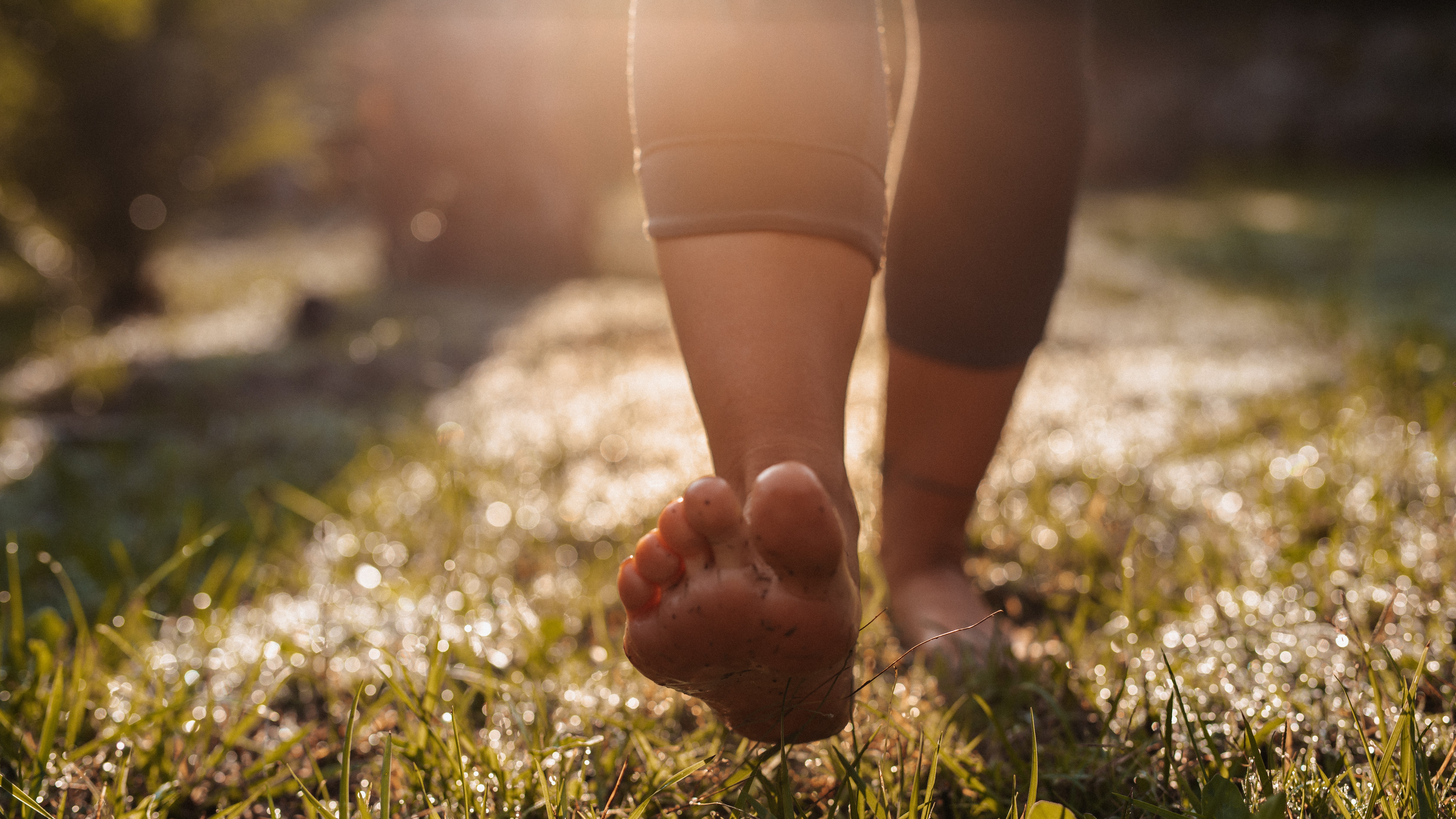
Walking through the forest, the ground beneath my hiking boots changes from the soft cushion of pine needles to a distinct crunch of dry twigs underfoot. I stop and feel the sensation. Taking another few steps downhill, I suddenly discover shelter from the cold breeze blowing off the lake and find myself instead in the welcoming embrace of a warmer current of air. I linger for a moment as if bathing in it. After a few more steps, my attention shifts from the blanket of bluebells to a shaft of sunlight slanting through the trees. I pause and gaze at the dancing light, noticing my own shifting awareness.
I’m doing what’s called a sensory threshold exercise in a forest bathing session guided by Georgie Dreher, a nature connection practitioner, in the Lake District – though she’s already explained that in forest bathing, there aren’t exercises, just invitations. The invitation, in this case, is to pause every time we notice a shift in our awareness. I’m here with a group of journalists on a press trip organized by Kathmandu, the New Zealand-based outdoor brand which is all about giving us the protection we need to receive the stress-busting, creativity-boosting benefits of spending time outdoors safely.
If you know me at all, the idea of me forest bathing – a Japanese technique that entails soaking up the atmosphere of your natural environment – won’t seem like a huge stretch of the imagination. I’m an outdoors journalist and can often be found in a forest or on a mountain, but I’m also a longtime practitioner and teacher of yoga and meditation. I’ll try any type of mind-bending, consciousness-enhancing practice and especially love those that take place in a natural environment.
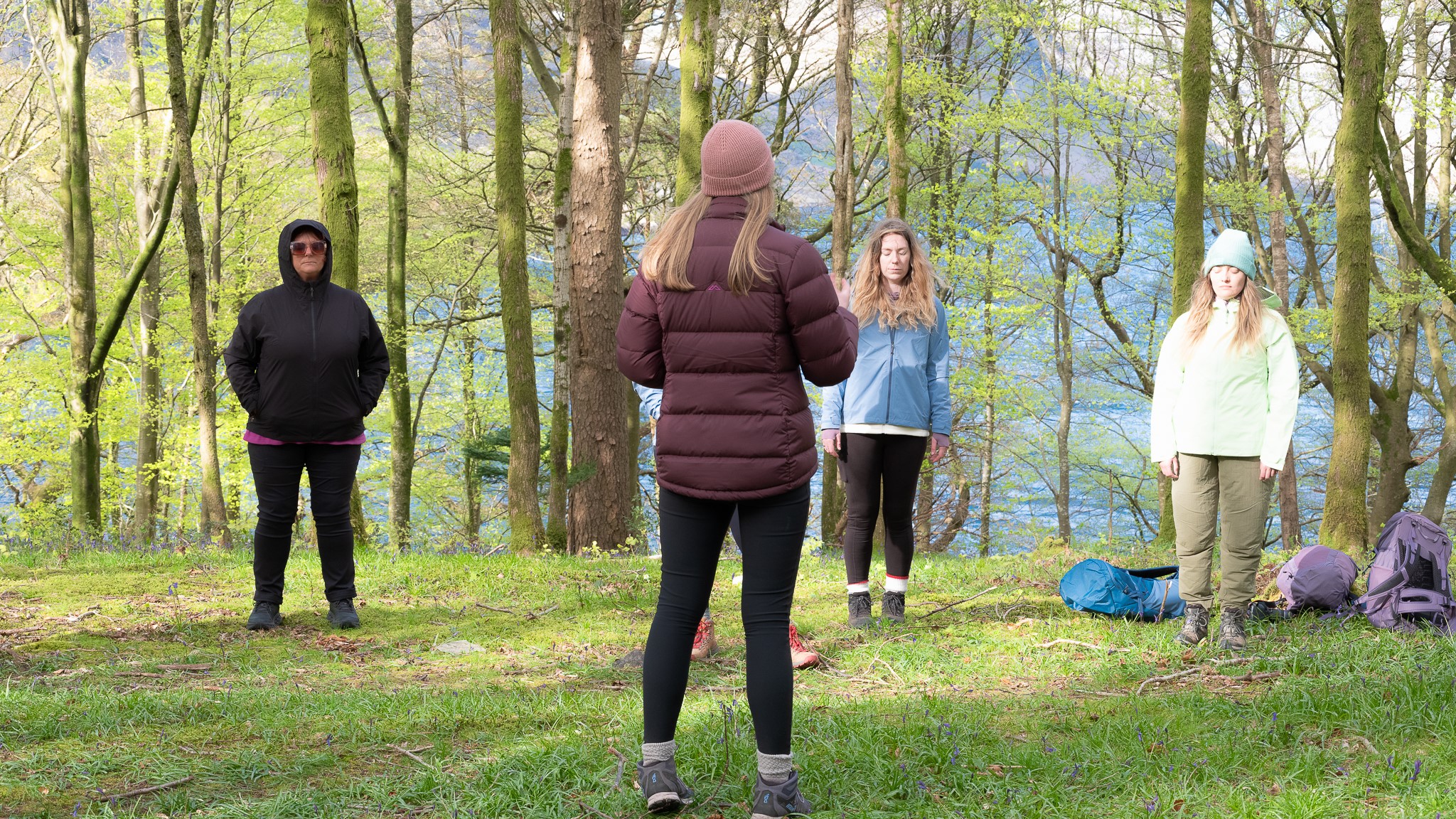
But on this day, I realize that I’ve fallen into an interesting pattern. Meditation is something I do at home, on a meditation cushion or a yoga mat. When I hit the trail, I usually do so at a brisk pace. I find the time in nature meditative and healing, but I’m also usually checking off a list: get to the summit by noon, take photos of any gear I’m testing, get back to the trailhead in time to catch the train home. When I do pause on a hike, there’s always a reason: drink water, admire a view, eat a snack. All important aspects of hiking, sure, but never do I pause simply to drink in the forest.
Now, that’s exactly what Dreher tells us to do.
“Spending time outside makes you feel something. Today I want you to try and check in with that. How is it that you’re feeling in any moment?” she says.
Though she looks at home here in England’s biggest National Park, Dreher explains that not that long ago, she was a business director for a tech firm, doing everything that was expected of her and was constantly ill and stressed. It took losing someone close to her in 2017 for her to turn her life around, leave the city behind and head for the woods.
Dreher trained in forest bathing, a practice that research has suggested can have potent implications for mental health, cardiovascular function and even immune health. It doesn’t involve actual wild swimming, just spending time in the forest without an agenda.
“Instead of having a purpose, like a place to be, the purpose is to just be.”
As she describes the common trap of always having a checklist, I realize I too have fallen foul to the habit of treating the outdoors as a place to run through the things that I want or need to do. So I fold away my trusty trekking poles and step out into the forest at a very slow pace, with no destination in mind.
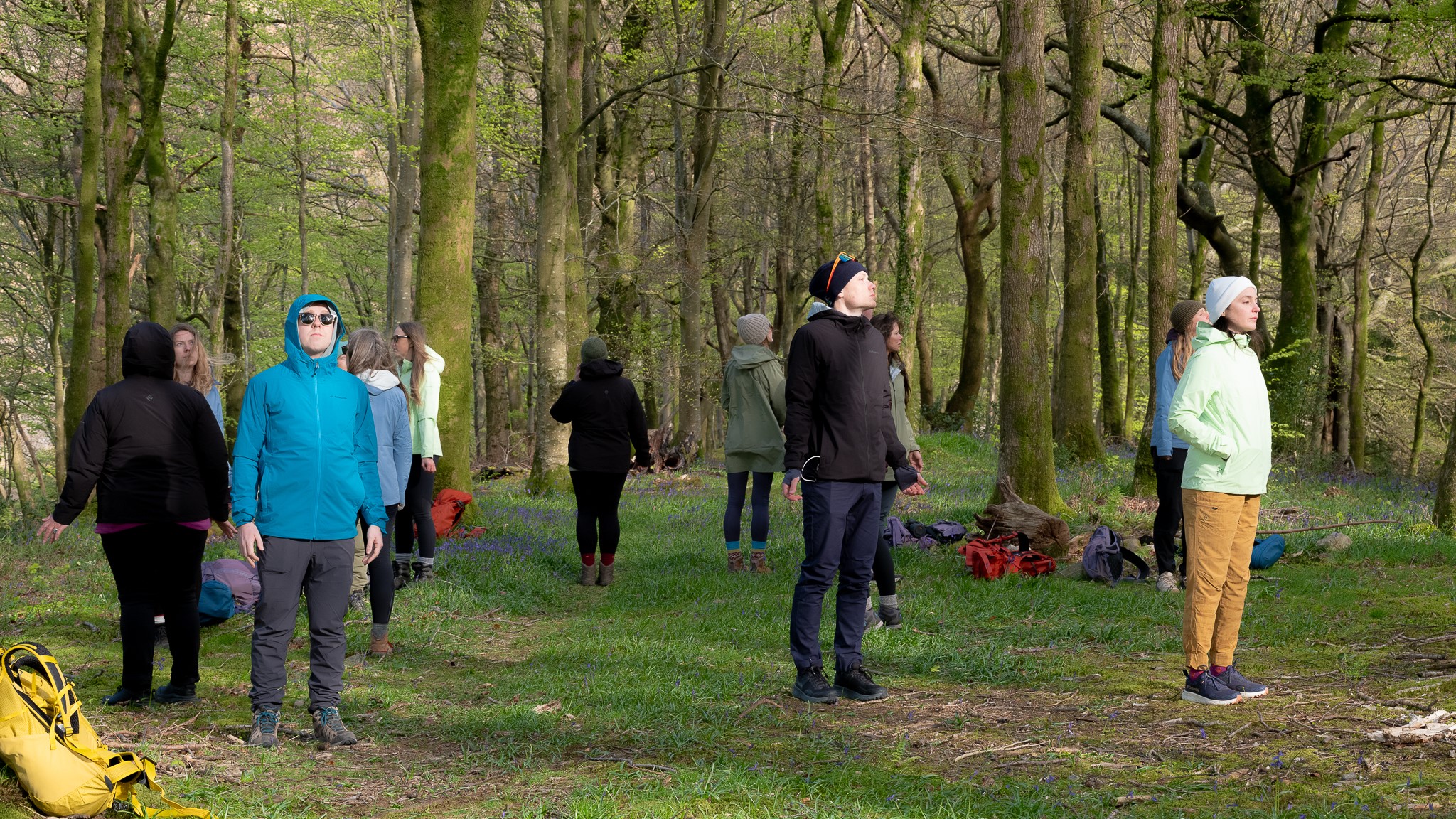
Hiking is wonderful for wellbeing
To be clear, I’m not seeking an excuse to do less hiking; it remains my favorite activity. Even if I am striding out at a fast pace with a focus on reaching a particular landmark, I’m aware that the merits of hiking are huge – from the physical benefits of low impact movement in a more sustainable heart rate zone to the ample time I get in green spaces. I’d choose the mountains over the gym any day of the week.
For me, however, the hiking trail is also a place where I tend to work through things. I might identify a source of discord in my relationships, come up with an idea for a new article and sometimes I even write a whole article in my head while I’m walking. It’s a great way for me to boost my own creativity, but it also means I’m often not fully (or even partially) taking in my surroundings.
And Dreher isn’t here to suggest that hiking isn’t a good thing for us all to be doing; rather, she’s pointing out that if that’s the only thing we do in nature, we might be missing out on some of what the natural world has to offer us. It’s true, perhaps, that I’ll still get the benefits of those phytoncides that trees release that are thought to boost immune health even if I’m not pausing to pay attention, but could there be benefits I’m not reaping because I’m moving too quickly?
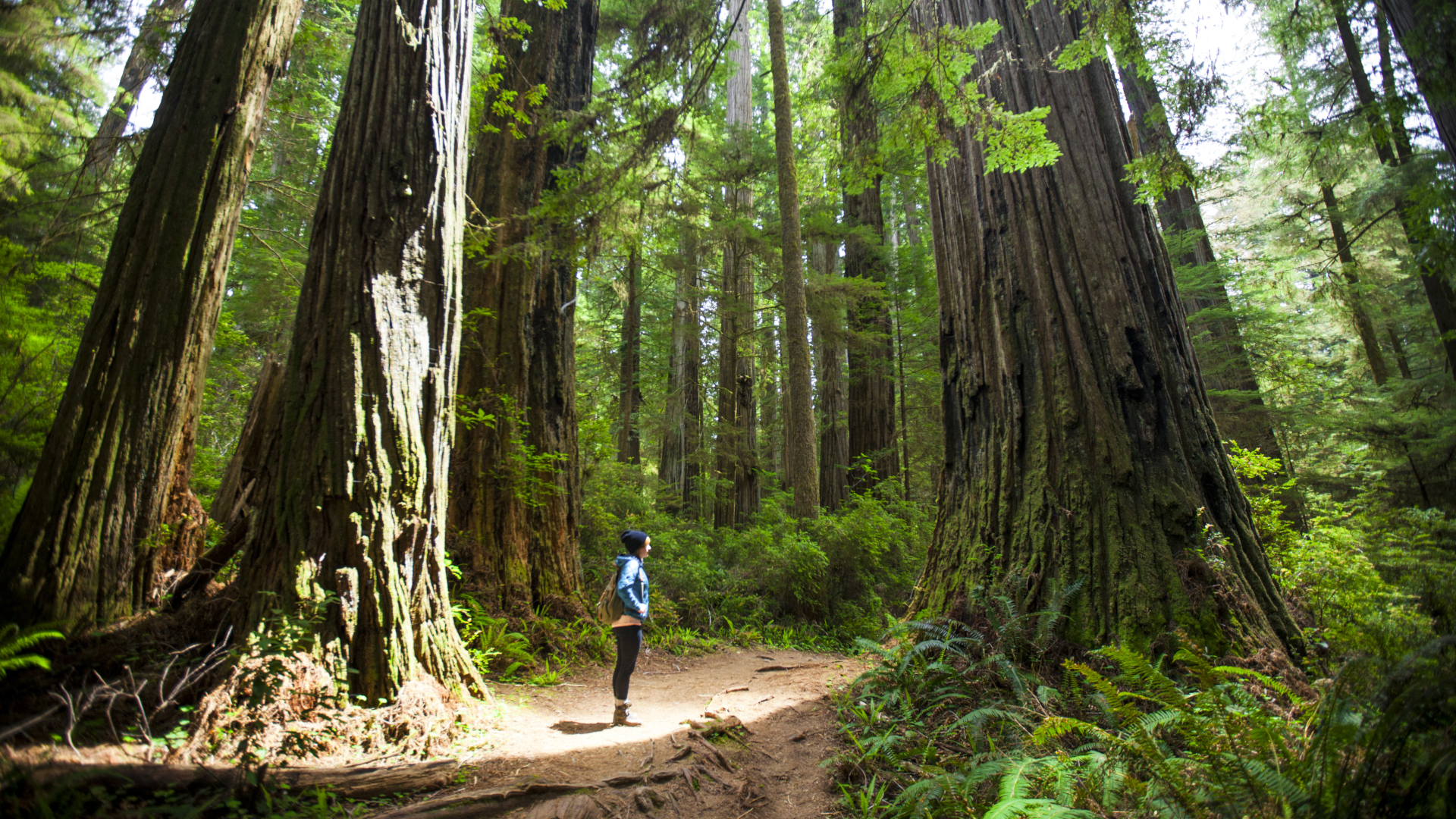
Time in nature with no agenda is really important
Just three or four slow steps into the sensory threshold invitation, I find a reason to pause. The breeze is rippling through the bluebells and the soft afternoon sunlight makes them look like chorus dancers in musical theater. I let myself be immersed in the spectacle, with no checklist to return to, I feel no pressing sensation to hurry.
“Notice how the forest makes you feel,” says Dreher.
Almost instantly, I realize I’m calmer and more engaged than I usually would be. I don’t feel the need to break the moment by photographing it or moving on to the next thing to discover. If I were hiking, I might be thinking about how I’d describe this scene to my partner, or fantasizing about what I’m going to eat later. All lovely parts of hiking, but all pulling me out of the present moment.
This moment, I quickly realize, offers an absolute feast for the senses. Shifting color and light, a whispering breeze, the lullaby of birdsong. In a sensory meditation to open our session, Dreher even had us breathe with open mouths to “taste” the air. There’s nothing more that I need to make the experience more fulfilling, and in fact, the pull to document the experience through photography or chat to another journalist about it only detracts from it.
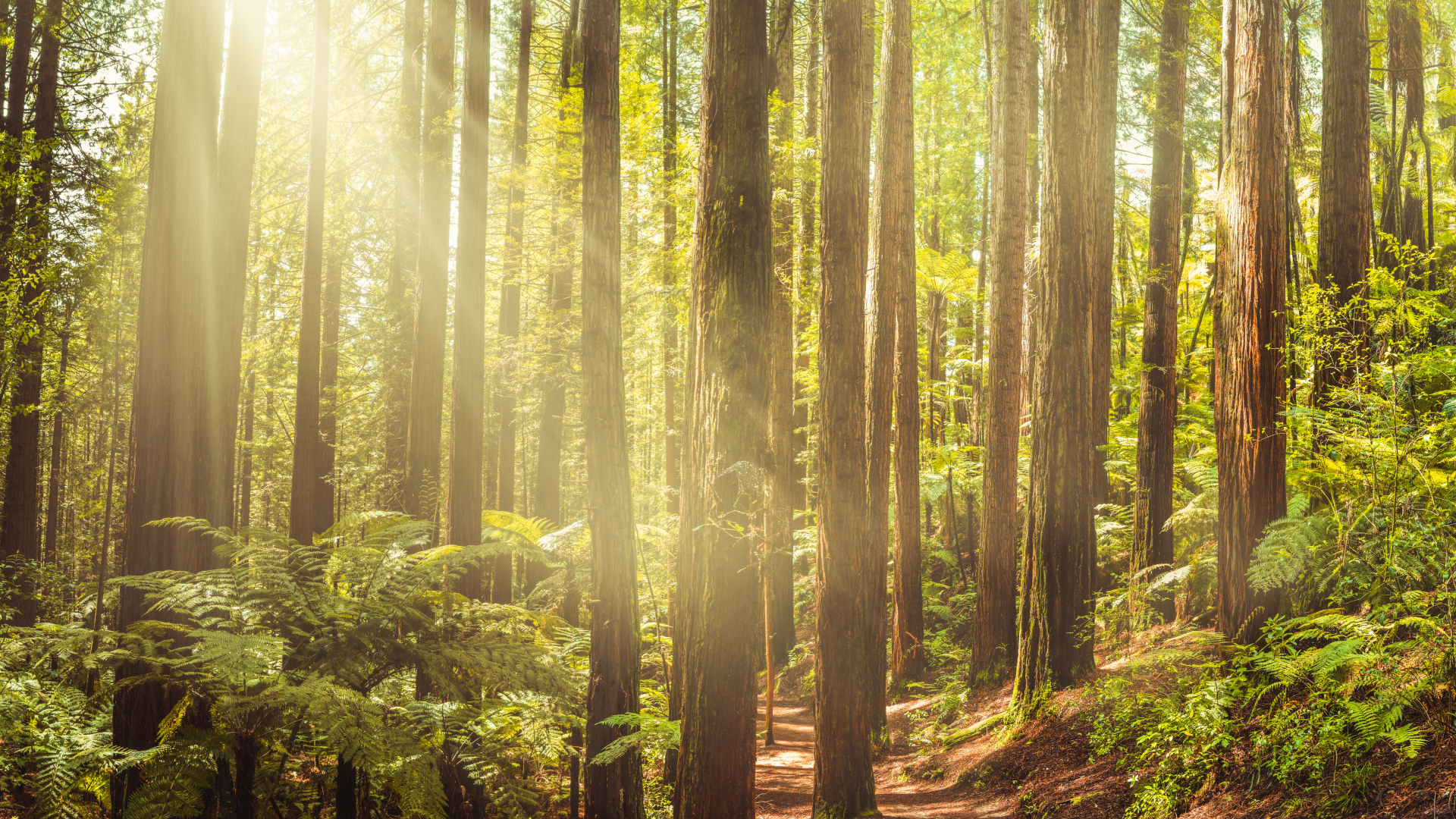
Into the wild
It only takes moments for me to realize that slowing down gives me the opportunity to realize the benefits of my surroundings, not just my activity. And the good news is that none of us has to choose between forest bathing and hiking. Any hike delivers an opportunity to pause and drink in your surroundings – you can build in even 15 minutes where you’re not snacking, snapping pictures or chatting and just wander slowly and aimlessly, pausing whenever something catches your awareness to notice how your surroundings make you feel. That’s the whole practice.
Then again, forest bathing doesn’t require special equipment, fitness or skill, so those people who might find hiking out-of-reach, can still receive tremendous benefits without having to conquer a mountain.
With the sun slipping behind hulking Buckbarrow Fell to the west and the temperature dropping, it’s time for us to go and now we walk with a destination in mind, for five kilometers across rolling English countryside towards the twinkling warmth of the pub for dinner. Collectively, we’re in a more reflective mood, a little quieter perhaps than we’d usually be. Or maybe, we’re just a little more comfortable in ourselves.







